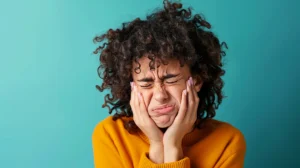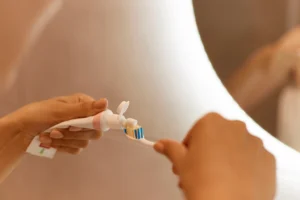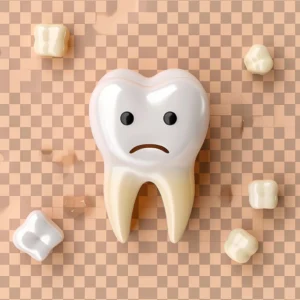Table of Contents
If you’re diligent about brushing twice a day but skipping flossing, your smile—and overall health—could be at risk. While brushing is essential, it can’t reach between your teeth where plaque builds up. This is where flossing comes in. Flossing cleans between teeth and below the gumline, removing harmful bacteria that could lead to serious oral health problems.
Dental Plaque: The Hidden Threat
Dental plaque is a sticky film of bacteria that, if left unremoved, can lead to cavities and gum disease, including periodontitis. This severe condition is characterized by inflamed, bleeding, and receding gums. Without flossing, your toothbrush only cleans three out of five tooth surfaces, allowing bacteria to thrive in the spaces in between. Brushing and flossing together ensure that all surfaces of your teeth are cleaned and help prevent plaque from building up.
Prevent Bacterial Infections
The bacteria in dental plaque aren’t limited to your mouth. An oral infection can enter your bloodstream, spreading to other parts of your body and increasing the risk of severe health issues like diabetes, heart disease, kidney disease, arthritis, and Alzheimer’s. So, why should you floss? Flossing helps stop the spread of these bacteria, protecting both your oral and overall health.
Flossing Is Quick and Easy
Adding flossing to your daily routine doesn’t take much time—about a minute is all you need. Here’s how to floss effectively with traditional dental floss:
- Take 18 to 24 inches of floss and wind it around your middle fingers.
- Hold 1 to 2 inches of floss taut between your thumbs and index fingers.
- Gently slide the floss between your teeth, reaching below the gumline.
- Move the floss up and down to remove plaque, taking care not to snap it against your gums.
- Use a fresh section of floss for each area to keep things clean.
Types of Floss: Options for Everyone
If traditional floss isn’t your favorite, there are other types of floss to consider:
- Interdental Brushes
These tiny brushes are ideal for cleaning between teeth, especially for those with bridges or joint mobility issues. - Rubber Tips or Wooden Plaque Removers
These can slide between teeth to loosen debris. - Water Flossers
Using a pressurized stream of water, these devices clean between teeth and along the gumline effectively. - Pre-threaded Floss Picks
Convenient for scraping away plaque and food particles, especially if you struggle with traditional floss.
Who Should Floss?
Everyone should floss! However, flossing is especially important for individuals with tight spaces between their teeth, dental implants, bridges, crowns, dentures, or veneers. If you have braces or clear aligners, flossing is essential to prevent plaque buildup and ensure a clean, healthy mouth when your orthodontic treatment is complete.
When Do Kids Start?
Many parents ask, When should kids start flossing? The American Dental Association (ADA) recommends starting as soon as your child has two teeth that touch. Building good flossing habits early helps set the foundation for lifelong oral health.
Best Time to Floss: Before or After Brushing?
For the best results, floss before brushing. Flossing first dislodges food particles and plaque, allowing your toothbrush to effectively remove them. If you floss after brushing, you’ll leave behind any dislodged debris until the next brushing session.
Conclusion
Flossing is essential for maintaining a healthy smile and preventing serious health conditions. The ADA recommends flossing at least once a day and brushing twice a day. By following these dental hygiene tips, you can keep your smile bright and your body healthy. At Hardin Family Dental, we’re here to help you maintain excellent oral health for life. Schedule your next dental cleaning with us, and show off the progress in your flossing routine!



